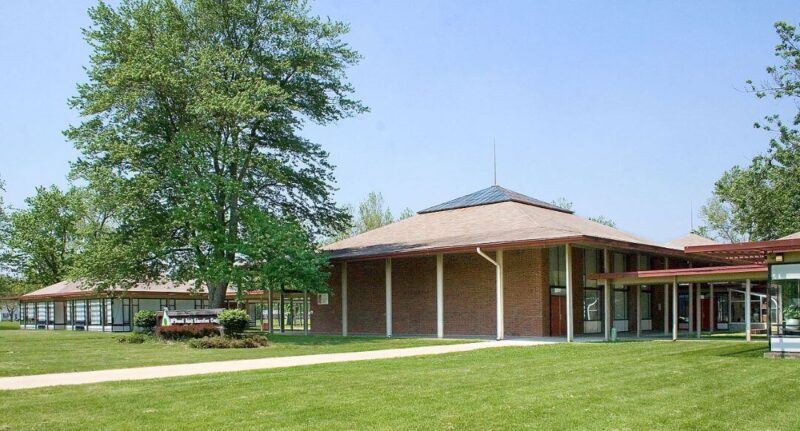During the mid century period, architect John Carl Warnecke became known not just for his buildings, but for his connection to the Kennedys. Still, the word we most often see used to describe Warnecke’s career is “prominent.” That is not quite the same as “famous.” In fact, we would go so far as to say that his talent has gone somewhat overlooked. In this post, we are going to take a closer look at the life and works of John Carl Warnecke.
Warnecke got an early introduction to architecture thanks to his father, Carl I. Warnecke, who worked as an architect in the San Francisco Bay Area. After he received his bachelor’s degree, John obtained his master’s in architecture in just one year at Harvard University, where he learned directly from Walter Gropius. Initially, he worked for his father before starting his own practice in 1950.
John Carl Warnecke’s Association with the Kennedys

Warnecke’s career intersects closely with the lives of the Kennedys. The first time Warnecke met John F. Kennedy, the architect was still working toward his bachelor’s degree at Stanford.
Later, during the 1950s, under the McMillan Plan, historic homes in Lafayette Square in Washington, DC were under the threat of demolishment. By coincidence, Warnecke was visiting DC when Jacqueline Kennedy, at the time the First Lady, was lobbying to protect the buildings. They ended up collaborating on a plan that would preserve the historic buildings while adding new ones that would exist in architectural harmony with those structures.

After the work on Lafayette Square, John F. Kennedy commissioned Warnecke for multiple projects. Alas, the president was assassinated before the two could work together on a library that I. M. Pei later ended up designing and completing instead. After his death, Jacqueline commissioned Warnecke to design her late husband’s grave site, known as the John F. Kennedy Eternal Flame.
Warnecke’s Contextual Design Philosophy
Warnecke was a major proponent of an architectural philosophy called “contextualism.” Contextual architects consider the context of a building site before designing a structure, making it their goal to design in harmony with the existing environment. This can include both natural and artificial structures and even cultural context.
It is easy to see how this philosophy informed Warnecke’s participation in the Lafayette Square project. As you explore his other works, you will see he took meticulous care to ensure that his structures were faithful to their surroundings. Below, we discuss a few of his most famous buildings.
Famous Works by John Carl Warnecke

- Hawaii State Capitol, Honolulu, HI: Pictured above is the Hawaii State Capitol Building. Every aspect of this structure’s design in some way pays tribute to the culture or geography of the Hawaiian islands, making it a fantastic example of contextualism in design.
- AT&T Long Lines Building, New York City, NY: 33 Thomas Street, also known as the “AT&T Long Lines Building,” is an unusual windowless skyscraper Warnecke designed to house long lines switches and hold up to a potential nuclear blast.

- Joseph Mark Lauinger Library, Washington, DC: For this brutalist building, Warnecke took architectural cues from the Flemish Romanesque Healy Hall on campus.
- Hart Senate Office Building, Washington, DC: While this building has a modernist style, it does not clash with the surrounding neoclassical office buildings.
- Hennepin County Government Center, Minneapolis, MN: This distinctive skyscraper has a shape reminiscent of the letter “H.”
Some other designs by Warnecke include the Mabel McDowell Adult Education Center (seen in the featured image for this post), the Henry Meyer Memorial Library, and the Hennepin County Government Center.
If you liked reading about John Carl Warnecke, you may also enjoy learning about other famous architects like Pierre Koenig, I. M. Pei, and Frank Lloyd Wright. And of course don’t forget to follow us on Instagram, Facebook and Pinterest for more Atomic Ranch articles and ideas!












